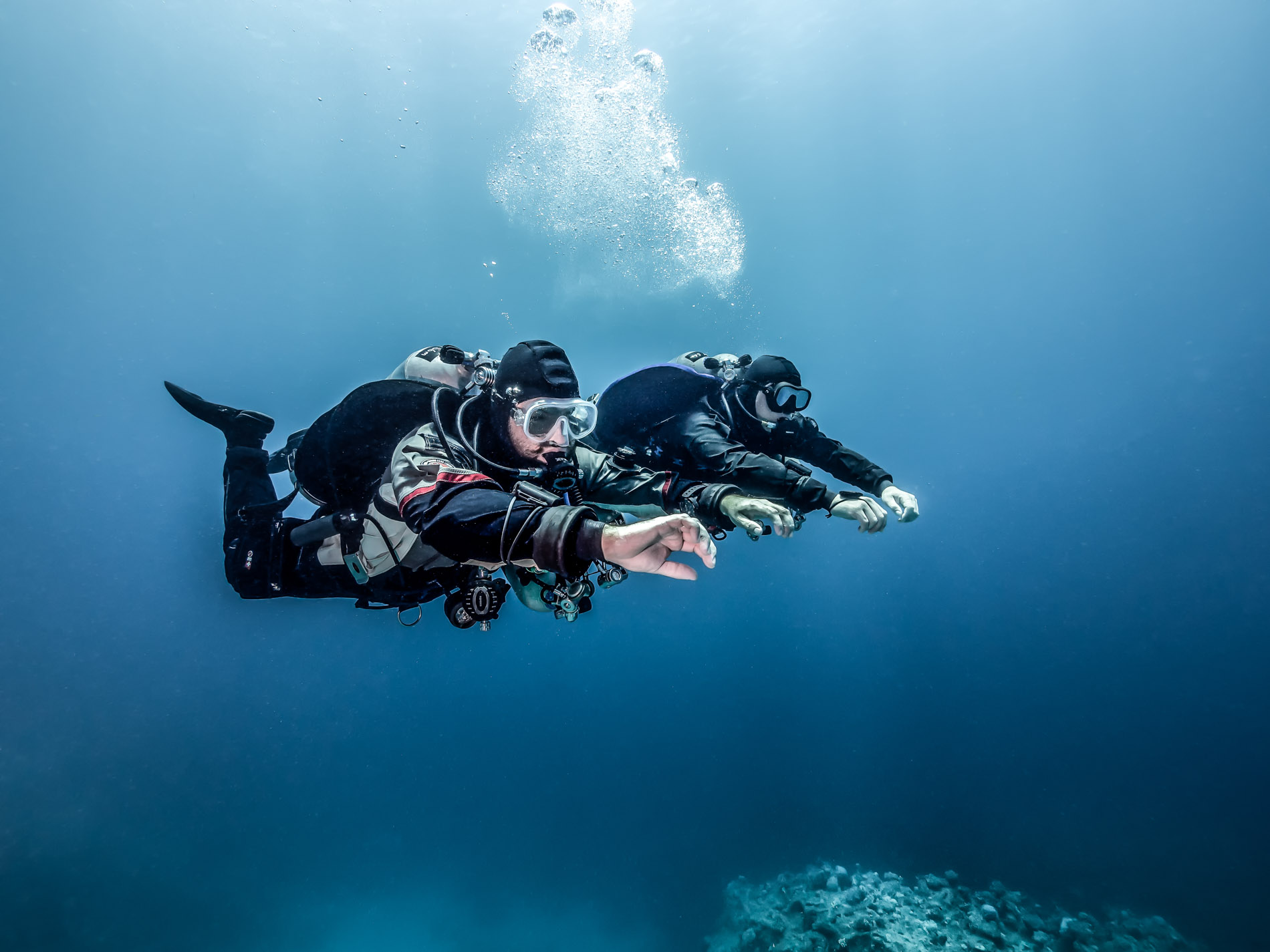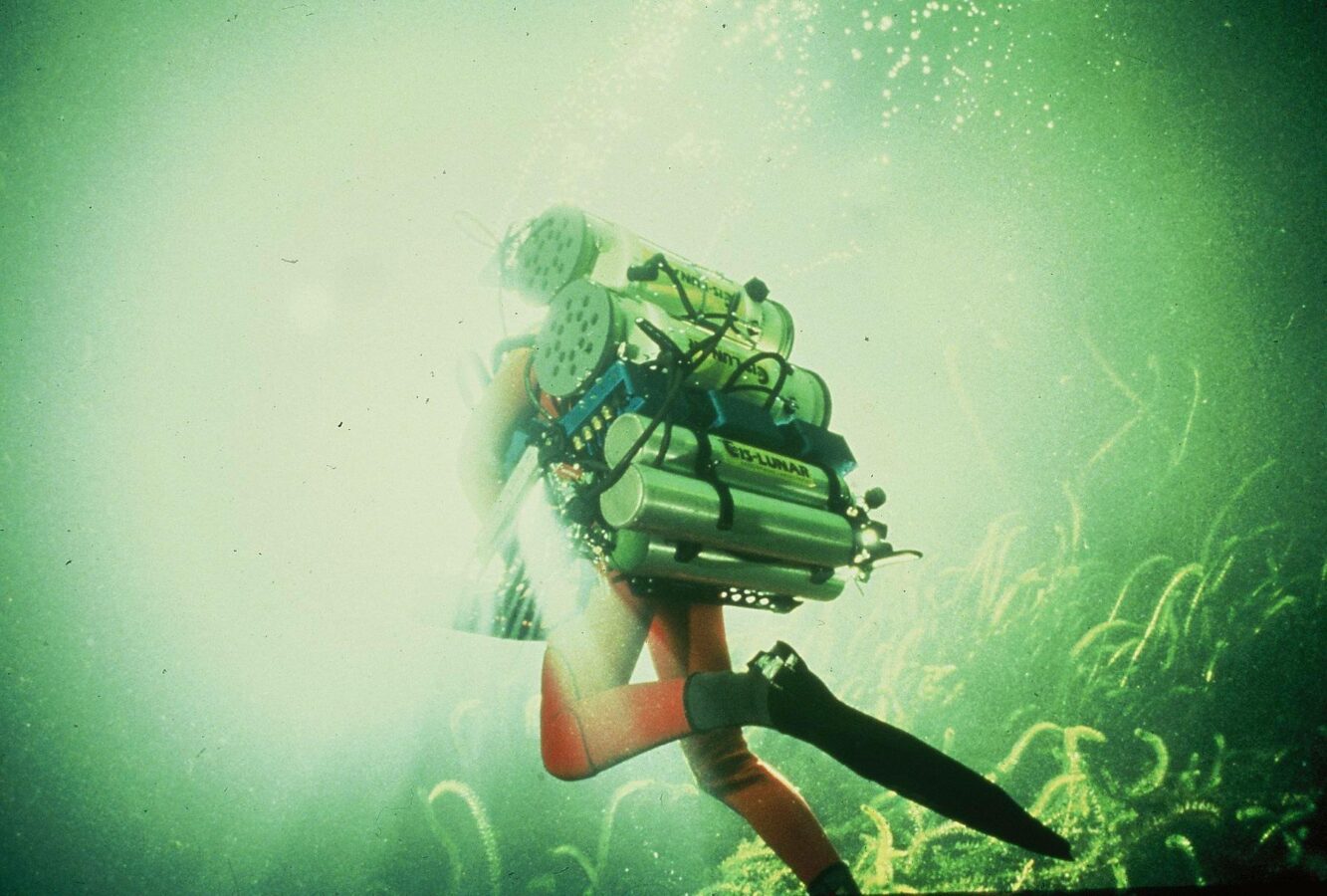Not into Technical diving? Why you should still consider a fundamental diving course!
Very often when people acquire information about our courses we receive questions as to why we require them to first do a fundamental diving course such as the SSI Foundations before we start off with a technical diving course. Some other instructors/centers don’t require those fundamental diving courses and instead let their students start off directly with the entry-level Technical diving courses.
What do I learn in a fundamental diving course?
Regardless of which organisation we use to teach the fundamental diving course, we always initially start with explaining the equipment configuration; most importantly how and why everything is configured the way it is. Here, you will already notice that the most important question you can and should ask during a course is, “WHY?”.

We don’t necessarily say the way we use and configure equipment is the one and only way, but we can definitely give you a good reason as to why we configure it this way. We will cover all the additional pieces of equipment you will carry during your courses, as well as giving you an overview of the choices on the market.
For the in-water work initially we only focus on trim and body positioning/posture. We will then introduce you to the following propulsion techniques:
- Frog Kick
- Modified Frog Kick
- Flutter Kick
- Modified Flutter Kick
- Helicopter Turn
- Back Kick
After you are familiarised with the new equipment configuration and have found your way round the propulsion techniques and buoyancy control, we will start to look at the basic skill set of technical diving This includes the following:
- How to perform an S-Drill and other safety checks in a team formation
- How to react in an out-of-gas situation
- How to swim next to each other in an out-of-gas situation
- How to ascend in an out-of-gas situation
- How to manage a free-flowing 2nd stage
- How to perform a Valve Drill
- How to switch to your backup mask
- How to safely and efficiently deploy an SMB
Why are propulsion techniques so important?
Try to imagine a situation where you are in a team of three doing a decompression stop in the blue around a shot line. An efficient team formation for this would be a triangle formation around the line which presents a visual reference for buoyancy control.

Now if there is a slight current you (and your team mates) will need to constantly correct your position in order to remain in triangle team formation. If you are only able to swim forward, your only choice is to circle around the whole team until you’re back in formation. On the other hand, if you are able to perform the a helicopter turn and back kick you can use those propulsion techniques to make minor adjustments and correct your position.
Another example is if you are conducting a gas switch in front of your team mate, you can use the correct propulsion techniques to keep a constant distance from them. So as you can see propulsion techniques are a key skill in technical diving!
A very good analogy for this would be to imagine you are in a car in a car park without the reverse gear and with a limited steering angle…. That wouldn’t be a nice situation, right?! Now imagine suddenly you get your reverse gear back and you can use the full steering angle. That would definitely be helpful, right?! ☺
Why should I invest so much time to learn the basic skill set?
The main difference here would be that in comparison to (unfortunately still most) sport diving courses, in technical diving we conduct the skills while being neutrally buoyant with a maximum depth deviation of 0.5m. So during your training you will not conduct any skills on your knees. Additionally, you should be able to do all of the skills while holding a team formation by propulsion techniques as keeping up the communication with your team mates in an emergency is essential in order that they can support and help you.
You will also need to incorporate the previously-learned propulsion techniques into the skill flow. This presents a higher level of multitasking and most people need some time to get used to it! You should also keep in mind that the basic skill set of technical diving consists of the most important emergency skills. Therefore, you should be practicing those skills a little bit more often than just one time. To a certain level we would like to build up what we call ‘muscle memory’ so that in a real emergency certain procedures come automatic and more effortless and free up more brain capacity which you certainly will need to keep in control of the whole situation!
Why is being ‘in trim’ (horizontal) underwater so important?
There are many reasons as to why being in trim (horizontal) in the water is important. Not just in technical diving!! Firstly, and most easy to understand, is that you present less surface area to the water if you use correct propulsion techniques and you are therefore a lot more streamlined. Because of this you will need to spend less energy moving through the water which is especially important due to the fact that we carry a lot more equipment compared to single-tank diving.
 A fundamental diving course will benefit your overall trim and propulsion techniques, help streamline your equipment configuration and improve your basic skill set.
A fundamental diving course will benefit your overall trim and propulsion techniques, help streamline your equipment configuration and improve your basic skill set.
Secondly, if you are in trim you will build up less CO2 which will lead to better gas consumption! In the theoretical part of your course you will learn about many other problems which can derive from CO2 retention.
Another important factor is that good trim gives you better general control of your propulsion techniques underwater.
Consider the following example: If you are swimming in trim (with your legs bent up from the knee and your fins slightly elevated) you will find it a lot easier to maintain neutral buoyancy. This is because the finning energy from your propulsion technique moves you forward, not up or down.
If you are in a position where your fins point downwards a little bit, you will have a certain amount of propulsion energy pushing you upwards which means that even if you are swimming at a constant depth you will be negatively buoyant! As a result of this, when you stop swimming you will need to make adjustments to your Buoyancy control device in order to be neutrally buoyant. So basically we could say if a diver is not in a good trim position they will have to make constant adjustments to their buoyancy.
You will see that if you combine a proper trim position with proper propulsion techniques you will glide almost effortlessly through the water!
During your fundamental diving course we will give you a lot of little tips on how to reach this position. In the end you will only need a little tension in certain muscles and focus on certain areas from your body!
How deep will I dive during my fundamental course?
This is very easy to answer: Very shallow!!!
There is no good reason to do deep dives during the initial training. You could even say the opposite is the case. Remember that in the shallow water between 0m and -10m there is the greatest pressure change! This makes it the most difficult depth for precise buoyancy control. So if you are able to perform a valve shutdown while back-finning at three meters depth, you will not have any issues performing the same skill at 40m or deeper!
What happens afterwards?
After doing a fundamental diving course you will be perfectly prepared to start your technical diving education! Normally, we start off your first technical diving course with an additional skill dive or two where we cover stage handling, gas switching and the rest of the required shallow-water skills specific to the agency for the course you are taking.
After that we can move over to simulated decompression dives and real decompression dives. In our entry-level courses we prefer to do around three real decompression dives including some with simulated emergency scenarios. This will give you a good chance to put your previously-learned skills and knowledge to the test and see if you can get out of the water safely – which which always should be the ultimate goal!
If you are interrested in improving your diving Skills or enter the world of technical diving, feel free to contact us and book your SSI Foundations Kurs



